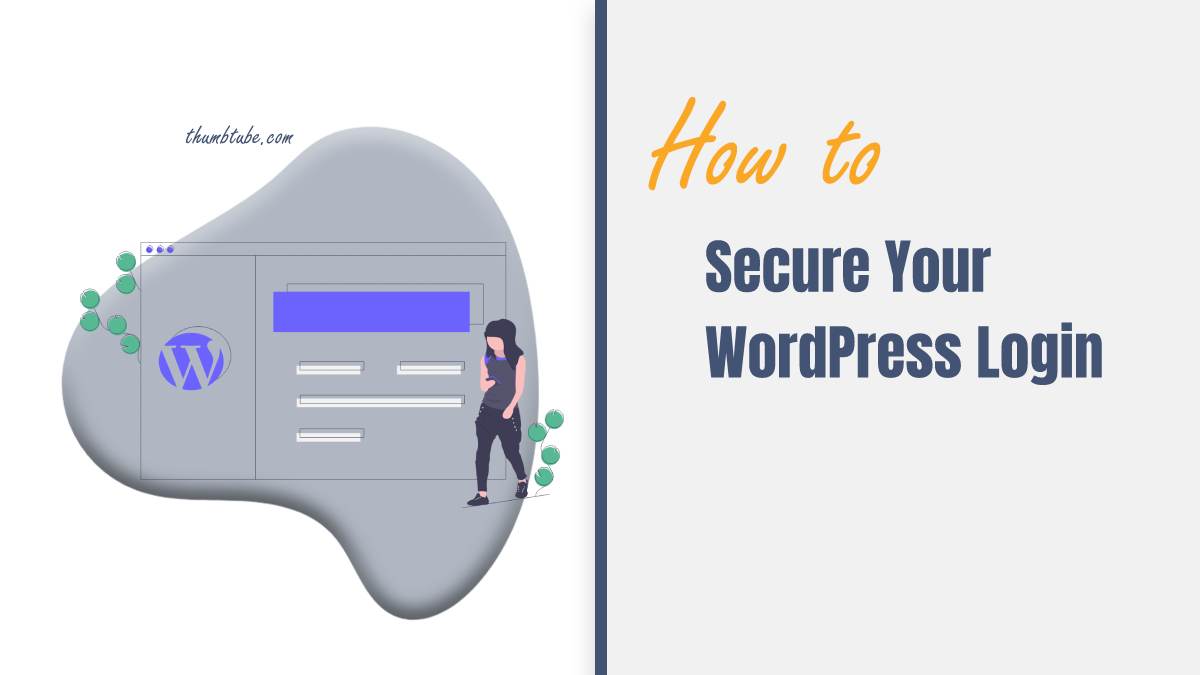WordPress is a popular and widely used content management system (CMS) that powers millions of websites worldwide. As a website owner, ensuring the security of your WordPress site is paramount, and one crucial aspect to focus on is securing the login process. In this article, we will explore how you can enhance the security of your WordPress site’s login by utilizing two powerful plugins: Login Lockdown and WP Force SSL. These plugins offer robust features to protect against brute-force attacks, and unauthorized access, and secure the transmission of login credentials.

Why do You need to Secure Your WordPress Site’s Login with a Plugin?
Securing your WordPress site’s login with a plugin is crucial for several reasons. Firstly, the login process is a common target for malicious attacks, such as brute-force attacks that attempt to guess usernames and passwords. By implementing a plugin like Login Lockdown, you can enforce lockouts and limit failed login attempts, effectively mitigating the risk of successful attacks. Secondly, securing the login process helps protect your site’s sensitive and personal data, including user information and confidential content. With plugins like WP Force SSL, you can ensure that login credentials and user interactions are transmitted securely through encrypted connections, safeguarding against eavesdropping and tampering. Lastly, implementing robust login security measures demonstrates your commitment to protecting your users and their privacy. It builds trust and credibility among your audience, encouraging them to engage with your site and share sensitive information with confidence. By prioritizing login security through plugins, you create a safer online environment for both your site and its users.
1. Login Lockdown
Login Lockdown is a plugin designed to combat brute-force attacks by restricting access to the WordPress login page. Brute-force attacks involve repeated attempts to guess the correct username and password combination, putting your site at risk. With Login Lockdown, you can fortify your site’s login process with the following features:
- Lockout after Failed Attempts: The plugin tracks failed login attempts and lock out IP addresses after a specified number of failed logins. This prevents attackers from making unlimited login attempts and mitigates the risk of successful brute-force attacks.
- Temporary Lockouts: Login Lockdown imposes temporary lockouts, preventing further login attempts from specific IP addresses for a predefined period. This added layer of security helps protect against sustained brute-force attacks.
- Notification Alerts: The plugin can notify site administrators via email when lockouts occur, providing real-time awareness of potential security threats and allowing for prompt action.
2. WP Force SSL
WP Force SSL is a plugin that ensures secure communication between your WordPress site and its visitors by enforcing SSL (Secure Socket Layer) encryption. SSL encrypts data transmitted between the user’s browser and your website, preventing eavesdropping and tampering with sensitive information, including login credentials. Here are the key features of this SSL plugin:
- Automatic SSL Redirection: WP Force SSL automatically redirects all non-SSL (HTTP) request to the secure SSL (HTTPS) version of your website. This ensures that the login page and subsequent user interactions are protected by encryption.
- Flexible Configuration: The plugin provides various configuration options, allowing you to enable SSL on specific pages or throughout your entire site. You can also exclude certain URLs from SSL enforcement if needed.
- Mixed Content Detection: WP Force SSL includes a mixed content detection feature that identifies insecure content (e.g., images, scripts) on your site that may be loaded via HTTP. This enables you to fix any insecure elements and maintain a fully secure environment.

Best Practices for Enhanced Login Security
In addition to using Login Lockdown and WP Force SSL, implementing a few best practices can further enhance the security of your WordPress site’s login process. Consider the following recommendations:
1. Use Strong Usernames and Passwords
Avoid common usernames like “admin” and choose strong passwords that combine uppercase and lowercase letters, numbers, and symbols. Additionally, encourage users to follow the same practice for their accounts.
2. Limit Login Attempts
Configure the Login Lockdown plugin to lock out IP addresses after a reasonable number of failed login attempts, thereby discouraging brute-force attacks.
3. Two-Factor Authentication (2FA)
Implement a two-factor authentication solution, such as the Google Authenticator plugin, to add an extra layer of security to the login process. This requires users to provide a second form of verification, typically a unique code generated on their mobile device.
4. Regularly Update WordPress and Plugins
Keeping your WordPress installation and plugins up to date is crucial for maintaining security. Developers often release updates to patch vulnerabilities and enhance security features, so ensure you regularly install these updates.
Securing your WordPress site’s login process is essential for safeguarding your website and user data. By utilizing plugins such as Login Lockdown and WP Force SSL, you can significantly enhance the security of your WordPress site’s login process. These plugins offer features like lockout after failed attempts, temporary lockouts, SSL enforcement, and mixed content detection to mitigate risks and protect against unauthorized access.
